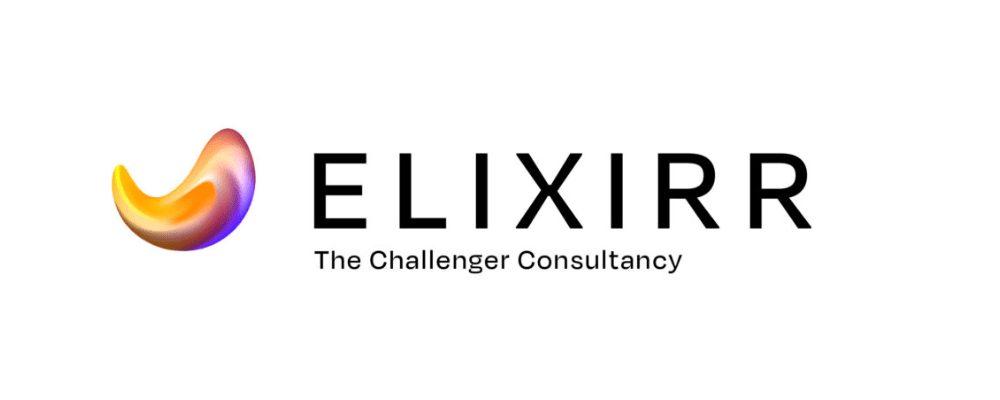From the pandemic to inflationary pressures, supply chain struggles, workforce shortages and the cost-of-living crisis, you name it, retailers worldwide have worked through it.
Over the last three years, businesses have overcome diverse and unprecedented challenges with reactive, problem-solving attitudes. And while the industry we know and love is overdue for some peace and quiet in 2023, there are still challenges left to navigate.
By now we’re all too familiar with the commotion caused in 2020, skyrocketing e-commerce figures across the industry. Whether it was bulk buying toilet rolls via Tesco delivery slots or ordering Nike’s finest footwear for the ‘Couch to 5K’, consumers took to online shopping like never before. But is e-commerce still a hot topic? New store arrivals suggest some key competitors are thinking otherwise, bringing both choices and change to this sector.
In with the old
 Bricks and mortar have no comeback to make; the stores never truly left. However, a reprise is on the cards this year, with a flurry of store opening announcements from industry giants. Strategists across the UK are talking square foot figures as well as website traffic, with on-the-ground growth rising up the agenda.
Bricks and mortar have no comeback to make; the stores never truly left. However, a reprise is on the cards this year, with a flurry of store opening announcements from industry giants. Strategists across the UK are talking square foot figures as well as website traffic, with on-the-ground growth rising up the agenda.
Marks and Spencer recently announced an investment of £480 million into bigger and better stores nationally, with enthusiasm matched by Aldi which targets 40-60 store openings each year. And catalysed by the arrival of Sephora in Westfield’s 6000 sq.ft. plot, flagship stores are set to flood London: Rolex on Bond Street and Ikea on Oxford Street. Whilst some visit for the latest flat pack furniture, and others for the Swedish meatballs, Ikea does an exemplary job of targeting their customer base through the shopping experience. Their audience is those who value affordability, spanning a myriad of subcategories like young families, newlyweds, singles living alone, students and young professionals, ensuring an appropriate offering for all. This approach is represented through the mock rooms snaked through the stores, providing inspiration and impulse purchase opportunities at every corner.
Even without walls, vendors enjoy substantial in-person purchases through pop-ups – this year, shoppers lined the streets for a chance to buy the Swatch and Omega collaboration products that were limited to London, never to be sold online. Across the country, customers are on their feet, not their iPads. Don’t just take our word for it. In the UK, online sales currently account for 25% of total retail spend – that’s a 9% drop from this time in 2022. It’s natural for such a dip to have encouraged investment into shopfloor space. However, even prior to this reduction, a third of shoppers preferred shopping in-store because of the physical interaction element. The argument becomes more compelling when combined with the fact that 61% of shoppers believe themselves likely to spend more when in a physical store, as opposed to when buying online. With three-quarters of the retail market up for grabs in stores, and customer preference clear, expansion makes sense.
The online opportunity
E-commerce growth is no longer the rocket ship it was in 2020, but it’s still expected to be the driving factor for nearly half of retail growth by 2027. 50% not selling it to you? That’s not all. Last year, the majority of online customers ditched a digital purchase despite being part way through the process.
Whilst this doesn’t necessarily suggest online shopping is on its way out, what this does show is that if you can offer a seamless online experience, you can scoop up an even bigger potential market. TikTok Shop is a popular spot, filled with users making impulse purchases based on trends and life hacks, half of whom admit to making copy purchases of influencers they follow.
As the proud owner of Molly-Mae’s favourite slippers, I plead guilty. The social media site reaches over 1 billion users worldwide, an overwhelming opportunity for those able to tap into the audiences searching for the latest must-haves. When relying on hashtags and algorithms to match products to shoppers, there are two advantageous traits for that selling: strong brand identity and a clear target market.
These focuses can be channelled in multiple formats online – influencers and paid posts, dynamic marketing reels to catch attention or the use of advertising cookies. With the alarm bells of House of Fraser ringing loudly, some e-commerce operators will understandably look at the bricks and mortar announcements with scepticism. Content with the size and speed of its market, they continue to invest in the near and now of the online.
Succeed at both
Looking beyond retail for a moment – do you use just one bank? My Grandparents aside – who find having one complicated enough – most would answer ‘no’. Plenty of people select a well-known bank for their salary payment, an alternative destination for savings, and a coral-coloured card for disposable income transactions made in Instagram-able cafés on Saturday mornings.
Humans are happy to diversify or try new options, and the same can be said for shopping. In-store and online have proven not to be mutually exclusive. There’s an opportunity to do both and merge the two, with the latter sparking creativity in retail.
Who doesn’t resent online shopping when needing to return three pairs of jeans in the bag you’ve already ripped or binned? Net-a-Porter certainly understand the struggle – they send a personal shopper who delivers the order and waits while the customer tries on before taking unwanted items away, removing the pain point of returns. It’s an inventive blend of in-person and online shopping.
The hybrid opportunity of bricks and clicks also stretches into virtual and augmented reality, both of which look likely to grow in the next decade. Most have seen online virtual tours of properties, but what about the viral video of shoppers holding up a mini cut-out of themselves to their laptops to ‘try on’ new shoes and outfits? This idea has since been professionalised for retail. Customers can virtually place a watch on their own wrist or a sofa in their own living room as VR apps and fitting rooms are fast adopted across the sector.
Going beyond visual virtuality, beauty and fashion brands continue to make waves with Web 3.0, offering more immersive experiences. A great example is L’Oréal, which use sound technology to create the impression of scent for shoppers purchasing items online. Likewise, Amorepacific has introduced the sense of touch to e-commerce: shoppers are able to anticipate how their skin would respond to external stimuli of products by using a skin-measuring device.
These beauty brands are using exciting tools to mark their identity in a populated part of the industry, and the benefits include enhanced user experience and engagement, customer time savings, purchase precision and ultimately stronger brand relationships. No wonder AR is anticipated to be worth $ 60 billion globally in less than ten years.
However, are we ready for this shapeshifting retail? UK customers in general are not particularly familiar with the innovative experiences and offerings. In fact, 40% declared that a buying experience based on these tools would not encourage them to make a purchase. Considering the conflicting information on the future impact of these methods, should retail leaders take the risk?
Checking out
Unsurprisingly, the internet isn’t going anywhere – retailers are right to invest in the digital space, whether it be a seamless site experience, social media support or augmented reality offerings. But society loves a shopping centre, and many of us seek an in-store experience that simply cannot be matched online. So, in which shopping basket should businesses put their eggs?
The spread of investment across online and in-store must depend on the specific customer base and best brand representation – two critical elements of the retail world. Whether it’s carrying out customer demographic analysis or exploring recent trends in shopfloor footfall and online traffic, there are strategies and systems that will ensure businesses are operating effectively in their space, optimising outcomes for their customers and company.
“We help senior business leaders turn ideas into actions. Of course, it’s execution that determines success; that’s why we also make change happen, treating our clients’ business like our own.
Our people make our firm. And while our team expands across the globe, we continue to attract the best talent in the industry, building a team of high performing, like-minded individuals who share our vision of building the best consulting firm in the world.
With the launch of our ESPP scheme in 2021, we gave our entire team the opportunity to be part owners of Elixirr — and with a 74% enrolment rate for 2022, entrepreneurialism has never been more embedded into our business.”
Please visit the firm link to site



